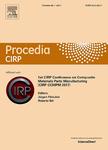版权所有:内蒙古大学图书馆 技术提供:维普资讯• 智图
内蒙古自治区呼和浩特市赛罕区大学西街235号 邮编: 010021

作者机构:Fraunhofer Project Center for Prod. Management and Informatics Computer and Automation Res. Institute (SZTAKI) Kende str. 13-17 Budapest HUNGARY Budapest University of Technology and Economics Department of Manufacturing Science and Technology Egry J. str. 1 Budapest HUNGARY
出 版 物:《Procedia CIRP》
年 卷 期:2016年第41卷
页 面:75-80页
学科分类:12[管理学] 1201[管理学-管理科学与工程(可授管理学、工学学位)] 08[工学]
主 题:Lead time Simulation Robust prediction Statistical learning
摘 要:In the paper, a novel method is introduced for selecting tuning parameters improving accuracy and robustness for multi-model based prediction of manufacturing lead times. Prediction is made by setting up models using statistical learning methods (multivariate regression); trained, validated and tested on log data gathered by manufacturing execution systems (MES). Relevant features, i.e., the predictors most contributing to the response, are selected from a wider range of system parameters. The proposed method is tested on data provided by a discrete event simulation model (as a part of a simulation-based prediction framework) of a small-sized flow-shop system. Accordingly, log data are generated by simulation experiments, substituting the function of a MES system, while considering several different system settings (e.g., job arrival rate, test rejection rate). By inserting the prediction models into a simulation-based decision support system, prospective simulations anticipating near-future deviations and/or disturbances, could be supported. Consequently, simulation could be applied for reactive, disturbance-handling purposes, and, moreover, for training the prediction models.